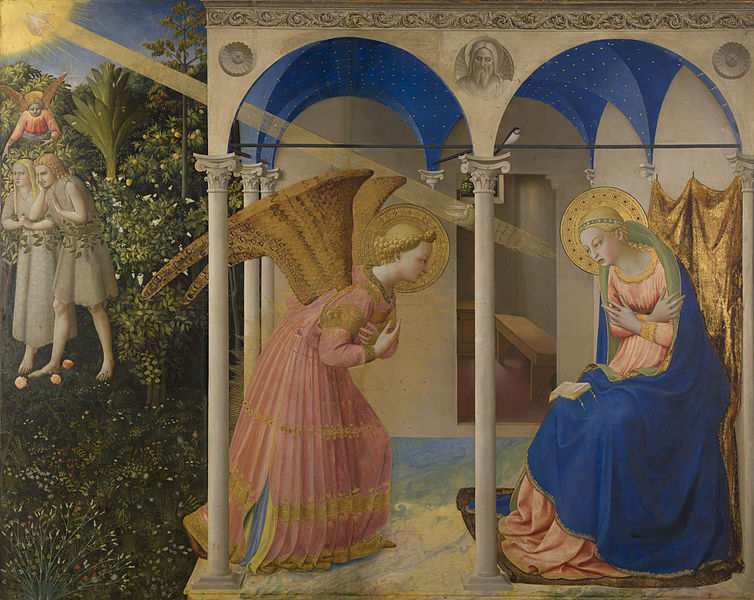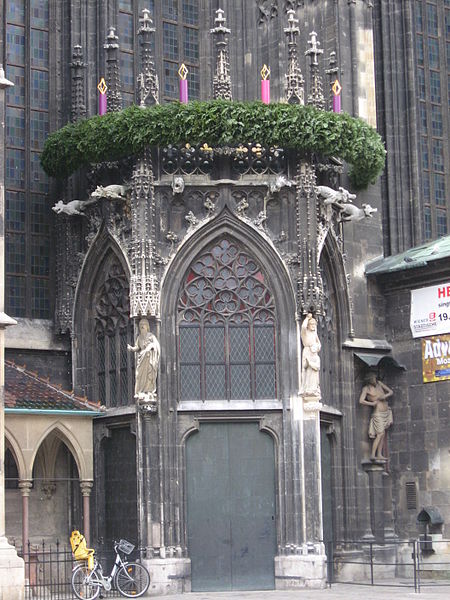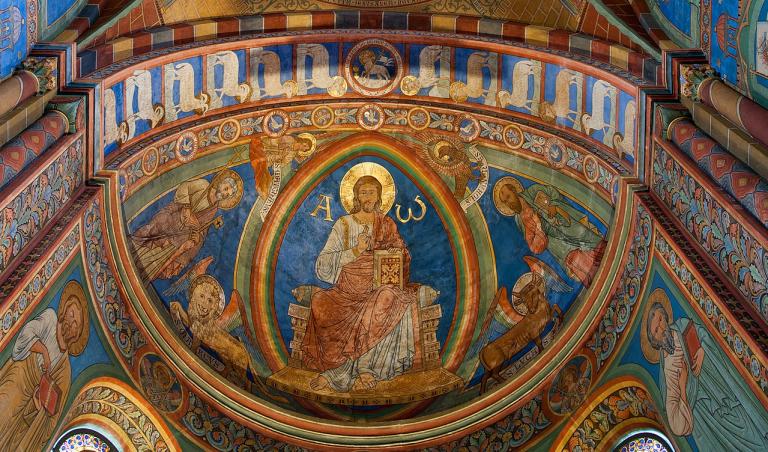David Russell Mosley

First Week of Advent
3 December 2013
On the Edge of Elfland Beeston, Nottinghamshire
Dear Friends and Family,
Here is an excerpt of an essay I am working on provisionally entitle ‘The Reclamation of Time’. I thought it would provide a good accompaniment to my letter from yesterday. Please, let me know what you think in the comments below.
The Liturgy of the Year
I want to begin, then, with the liturgy of the year. This is the macro-level at which Christians can look at time. As each year roles through, beginning with Ad- vent in late November or early December and ending in Ordinary Time in late No- vember, a kind of non-identical repetition emerges. The movable dates, like Advent, Ordinary Time, Ash Wednesday, Easter, etc., are now on different dates and some- times different days of the week. Nevertheless, despite the change, they remain in many ways the same, Ash Wednesday is still Ash Wednesday, Lent is still a time of fasting. However, we are different, the year is different, and the readings are differ- ent. Our experience of any particular date will change from year to to year and yet the structure remains the same. This is the big picture, which tells the story of Christ’s coming to Earth, his life during that time, his death, his resurrection, his as- cension, and his sending of the Holy Spirit. In between the major feasts (besides the lesser festivals and Saints’ Days) are the seasons that accompany them. Seasons of feasting and fasting. It is at this level that Christian explores the notion that all of his- tory is pointed toward the coming and return of Christ, that time, on a grand scale, is here to tell that story. The roots of the Christian year, can be found in the Scriptures, to which I shall now briefly turn.
David Russell Mosley
That there is a religious calendar for the ancient Hebrews is indisputable. When it came into its final form is beyond my purview. The point is that for the He- brew people, the theological and cultic ancestors of Christianity, the year was to be viewed through the lens of the various celebrations and commemorations of God’s actions in the history of Israel. The question then becomes, is this something, on the macro level, that was taken on by early Christianity. This seems equally clear from Luke’s use of Pentecost in Acts as well as Paul’s mention of it in 1 Corinthians 16.8. Still, however, there is little mention of any other major celebrations or commemora- tions in the works of the New Testament. It is, perhaps, a bit inconclusive to what extent the earliest Christians were beginning to think of the year in terms of God’s interactions with humanity throughout history, and especially in the sending of His Son. Nevertheless, with celebrations of the Old Testament in their blood, it at least provides a foundation on which to build a more intentional understanding of the year rather than a simple progression of months and seasons.
As the year developed over the centuries, it worked itself, like the Hebrew calendar before it, around the comings of God into human history. Louis Bouyer writes, ‘God’s intervention in the history of mankind since the Fall, God’s word mak- ing itself more and more perfectly heard and understood by men, all this Divine ac- tion seems from the beginning to be founded on one clearly defined objective:––the formation, out of common and fallen humanity, of a people which should eventually be God’s Own People.’1 These interventions, as he calls them,2 are for one purpose, to create a community known as the People of God. Thus in the yearly celebrations of God’s interactions with humanity, the people who celebrate form that very com- munity. They participate in the divine actions by commemorating them and even re- enacting them by their very celebrations. Bouyer writes concerning the homilies of
men like Gregory of Nazianzus and Leo the Great, ‘On every page, these [homilies] remind us of the fact that in the liturgical year we are not only making a commemo- ration of the past but also actually living again the realities on which we are meditat- ing with the Church.’3 The Church, which is forming itself and being formed into the People of God by participation in the celebrations and solemnities of the Church Year, is also participating in the realities being celebrated. In Advent we await the first and now also the second coming of Christ; in Christmas and Epiphany we live again the reality of his incarnation; in Lent we relive the reality of his death; in Easter his Resurrection and defeat of sin and death; in Pentecost, his sending of the Spirit. Even in Ordinary time we relive with the Church the reality of the times be- tween God’s obvious interactions with history. All of this points us ultimately to the return of Christ. Schmemann, commenting on Pentecost, writes, ‘No matter what the original liturgical expression of Pentecost may have been, its preservation in the Church––as the fifty day period following Easter––points again to the Christian ‘adoption’ of a definite understanding of the year, of time, of the natural cycles, as having a relation to the eschatological reality of the Kingdom.’4 In fact, as Bouyer argues, the Church Year is both an expression of the Word and Mystery entrusted to the Church, but it is also a kind of creation of that Mystery. That is, by participating in the liturgy, the Church calls forth Christ in the mystery. As he writes:
For the liturgical year, seen as a whole, is the great proclamation by the Church of the Word with which she is entrusted. In the celebration of the li- turgical year, therefore, the Mystery is proclaimed, communicated and par- ticipated in. Since the liturgy is, according to the fine phrase of Pius XI, “the principal organ of the ordinary magisterium of the Church,” and as liturgy is all set out within the framework of the liturgical year, the framework contains not only an expression of the Mystery, working by faith through charity and tending toward its final revelation. For the Word of the Mystery cannot be so solemnly proclaimed by the Church without thereby creating what it proclaims.5
The importance of the year cannot be underemphasises. It is preeminent to all the other liturgies of time which follow it. Therefore, I shall now move from the liturgy of the year to the liturgy of the week. It is, perhaps, interesting to note that there is no real liturgy of the month. This could possibly be the case because Christians, in part due to the Julian calendar and a rejection of things that appeared too Jewish, no longer followed a lunar calendar. It is also likely, however, that as the seasons of the Church Year developed, this implicitly became their liturgy of the month, or more appropriately, their liturgy of the season. Thus rather than having twelve months the Christian Year has six seasons (five if Epiphany is only a feast day and not a season).
Sincerely yours,
David Russell Mosley
1 Louis Bouyer, Life and Liturgy (London: Sheed and Ward, 1965), 23.
2 I would prefer a different word here from intervention, perhaps interjection, though even that provides too deist an account of the God who upholds the cosmos at all times.
3 Louis Bouyer, Life and Liturgy (London: Sheed and Ward, 1965), 186-7.
4 Alexander Schmemann, Introduction to Liturgical Theology trans by Asheleigh Moorhouse (London: The Faith Press, 1966), 69.
5 Louis Bouyer, Life and Liturgy (London: Sheed and Ward, 1965), 189.











